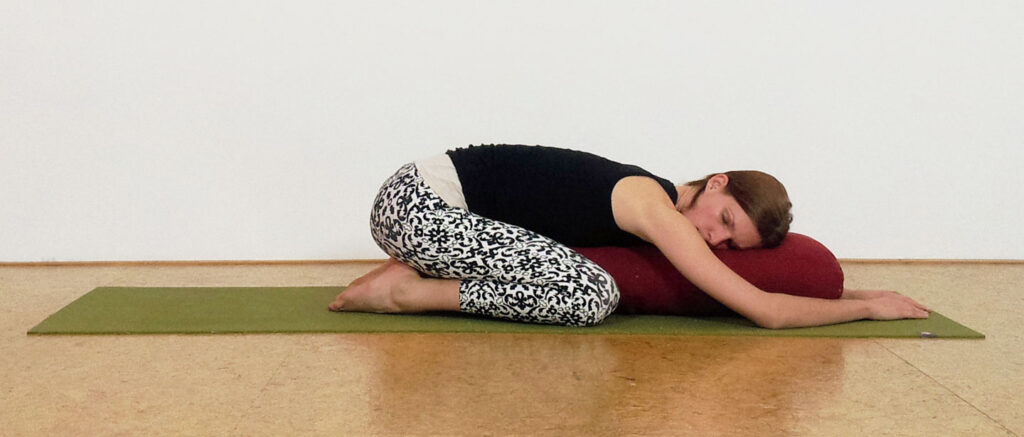How to practice
Tiger in the tree:
Sit on your lower legs with knees apart and big toes together. If this is uncomfortable for your knees, there are several options. You can place blankets/meditation pillow etc, below your seat to release the pressure around the knees to a height that is comfortable. You can also place a tightly folded towel or yogastrap behind your knees to create some space around the kneejoint. If there’s discomfort around the ankles, use a small rolled up towel below your ankles to decrease the stretch.
Place your bolster (or 2-3 stacked blankets) lengthwise between your knees. You can also add 1 or 2 folded blankets on top of the bolster and over your upperlegs, up to the fold of your hips. This way the belly will be fully supported when you fold forward towards a wide kneed supported childspose aka tiger in the tree. The blanket(s) can also help to decrease any strain around the hips. If you have your seat elevated, you can also place 2 bolsters and /or blankets to create a height where your head is at about equal height as your hips.

